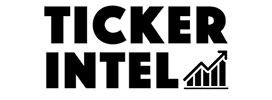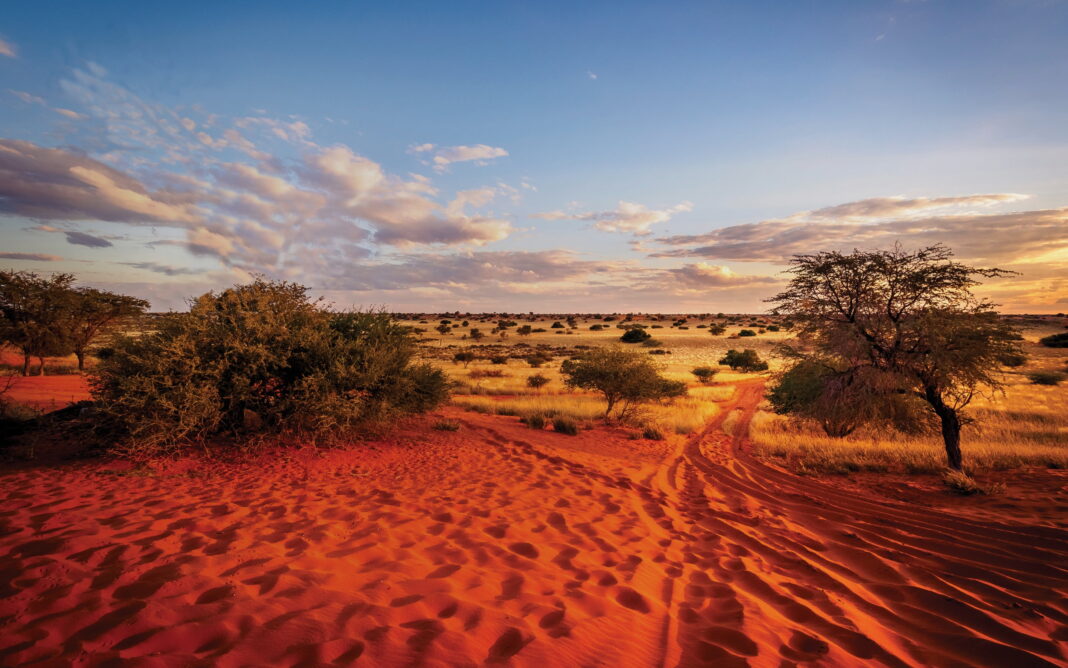Eira Thomas, President and CEO of North Arrow Minerals (TSXV: NAR), discusses the company’s initial exploration results at the Kraaipan Gold Project in Botswana.
Eira Thomas brings over 30 years of experience in the mining industry, including 14 years with Aber Diamond, now Dominion Diamond. She was the co-founder of Stornoway Diamonds Corp, serving as the first CEO and then as executive chairman. There she led the acquisition of the Renard Diamond Deposit, which subsequently became Quebec’s first diamond mine. In 2007, she founded Lucara with partners Mr. Lukas Lundin and Catherine Mcleod Seltzer and served as CEO between 2018 to 2023. She also served as CEO of Kaminak Gold which was acquired by Goldcorp. in 2016 for 520 million-dollars and she also served as director of Suncor Energy for 17 years.
In this interview, Eira covers the inaugural exploration program results and how quickly the team hit the ground running with new technology-driven exploration tools, and what the next steps are as the company advances one of Africa’s most promising under-explored greenstone belts.
*Disseminated on behalf of North Arrow Minerals
Devan Murugan: Vancouver based explorer North Arrow is pushing into one of Africa’s most intriguing greenstone belts and the early signs are promising. The company has just wrapped up a regional reconnaissance program at its Kraaipan Gold project in Botswana and identified five priority gold targets. Drilling results are showing grades comparable to a producing mine only 40 kilometers away. Well, we want to find out more about this. North Arrow President and CEO Eira Thomas joins us now. Eira , thanks very much indeed for chatting to us again.
Eira Thomas: My pleasure to be here. Thank you for having me.
Devan Murugan: Well, look, you’ve already pinpointed five gold targets with grades comparable to a producing mine nearby. Just stepping back for a bit, I want to know how big of a moment is this for North Arrow and what story are these early results starting to tell?
Eira Thomas: Well, listen, I think it’s a great endorsement of our strategy. There have been two main objectives with the work that we’ve been doing at Kraaipan. The first has been to get in there and to be able to rapidly assess a very large area which has never been systematically explored. And the second was to be able to do that very cost-effectively. So for $1 million US, we’ve been able to complete airborne magnetic surveying over the entire Greenstone belt area, as well as, following up with 200 reverse circulation drill holes, which were designed to collect both base of Kalahari sand samples and then also test interesting bedrock targets that were identified from our geological and structural interpretation work that we did on the airborne magnetics. So, as you mentioned, we already identified five key areas for follow-up and it’s important to state that the objective here was really to do a broad swath and hopefully get some indications of gold. So to get anomalous gold in five areas, we’re extremely pleased with that result and we still have a third of our drilling results to come. So we’re waiting on a third and those are from an area in the south of the belt where in fact there is pretty good outcrop exposure in some areas and where we have historical drilling results from reunion that return some very interesting potentially economic grades as well. So we’re excited to see the next batch as well.
Devan Murugan: Yeah, and you’ve done that with the use of technology driven low cost exploration approaches. Can you explain how that gave you an edge in covering such a large underexplored area?
Eira Thomas: Yeah, first off, the reason that this area is so underexplored is not because it’s remote or in an area that is difficult to explore in. The reason that it hasn’t been explored in the past is because most of it is overlain by Kalahari Sands and so that has deterred a lot of exploration efforts. So we really wanted to bring technology to bear on this challenge and find a way to see through that sand cover. So, we were able to do that again by flying the airborne magnetics to kind of give us the best kind of hopes of understanding the geology without being able to physically see it on the ground. And then having access to a proprietary drill and this really all comes through our partner Rockman who have been southern African-based for many many years and working in Batswana for close to 20 years. This is technology that they have developed and they have teams in place that have been doing this for a long time. So yes, the technology piece was super important because that allowed us to both keep costs down and to do this all so quickly. It’s pretty remarkable to get 200 holes drilled in a single season. Yes, they’re short holes. They’re, you know, exploratory in nature. We’re not drilling off a resource at this stage, but the fact that we’ve identified five important follow-up targets is a great start, and we’re super excited to see what the next results will show us as well. And then we’ll begin planning our program for the latter part of the year and into 2026.
Devan Murugan: Now, having said that, those early grades are really on par with the Kalgold mine to the south. If I’m an investor, I’m looking at that. I mean, how should I interpret that comparison? It sounds compelling, doesn’t it? What’s the real potential you see in this belt?
Eira Thomas: Yes. And listen, of the five, there was one hole in particular which started and ended in mineralization and gave us some comparable grades up to 0.9 grams a ton. So certainly pleased to see that. Those are, you know, not true widths, we ended in mineralization. We don’t really know what that means yet. We clearly have to go back in and follow that up and of course, the next step would logically be some angled holes to test that structure more thoroughly to see whether or not we’ve got something that’s worth chasing. But the fact that in this first phase of drilling we’re getting grades comparable to the grades at the Kalgold open pit mine which has been in operation by Harmony for many many years and it’s a 3 million ounce plus deposit. We’re super excited to be getting those kinds of grades at this early stage.
Devan Murugan: I hear you because you say you still have those assays pending, more drilling planned. What are the immediate next steps though under those circumstances to move these priority targets forward?
Eira Thomas: Well, again, I think we want to get all the results. One thing we don’t have yet is a complete interpretation of all the multi-element work that’s been done on these samples as well. As I mentioned, it’s been kind of a two-pronged approach with the drilling. We wanted to really get basal Kalahari sand samples that have never been collected before to give us more of a regional understanding of the full mineral potential of this belt. While we’re targeting gold and we’re targeting kind of the Kalgold model of gold in banded iron formation (BIF), it’s important to note that this is a traditional archean greenstone belt that has the potential for many other commodities other than gold, there’s also potential for nickel, for copper. So we’ve got a bunch of analysis and work to do with all of the geochemistry and then of course, yes, we’ve got more assays coming from this third phase of drilling which focused on the southern part of the belt where we’ve got really limited sand cover. And you know, one thing I didn’t mention, but of the five target areas that we’ve identified for followup, the average sand thickness in those areas is actually quite thin, under 10 meters. So, that’s also a really important kind of aspect of the results and the program and why we’re so encouraged. You know, if we were sitting in 100m of sand, then the economic threshold would look quite different, but you know, 8 to 10m of sand we think is very manageable and that gives us further confidence in continuing to invest in the further exploration of this entire belt.
Devan Murugan: Well, let me use that theme to wrap up then Eira. I mean, what does success at Kraaipan mean for North Arrow’s future and how does it fit into your longer term growth strategy given some of the promising things you’ve mentioned there?
Eira Thomas: For us, we wanted to bring a project into the company that had the potential to be world class and we think Kraaipan ticks all those boxes. It’s an underexplored greenstone belt. We own a large land position within that belt. We have access to a very experienced and qualified team to help us explore that, using cutting edge technologies to keep our cost low. So, we have a chance at, I think, making a really important discovery in a very cost-effective way which will allow us then to grow the company and continue to raise capital to advance this and turn it into something material for our shareholders.
Devan Murugan: Well, I’d like to keep my eye on it. Well, thanks very much indeed, North Arrow President and CEO, Eira Thomas, always a pleasure. Thanks indeed for chatting to us.
Eira Thomas: A pleasure indeed. Thank you very much.
DISCLAIMER: Please be advised that this interview is intended solely for entertainment purposes and does not constitute a solicitation for the purchase of securities nor an offer of securities. This content was disseminated on behalf of North Arrow Minerals. It is strongly recommended that readers seek guidance from a registered investment advisor and other professional advisors, as necessary, to assess the suitability of investing in any securities or investment strategies mentioned herein. Additionally, please note that the contents of this interview may contain errors.
Forward-Looking Statements
This news release contains “forward-looking statements” including but not limited to statements with respect to North Arrow’s plans, the estimation of a mineral resource and the success of exploration activities. Forward-looking statements, while based on management’s best estimates and assumptions, are subject to risks and uncertainties that may cause actual results to be materially different from those expressed or implied by such forward-looking statements. These risks and uncertainties include, but are not restricted to, the amount of geological data available, the uncertain reliability of drilling results and geophysical and geological data and the interpretation thereof, and the need for adequate financing for future exploration and development efforts. There can be no assurance that such statements will prove to be accurate. Actual results and future events could differ materially from those anticipated in such statements. The Company assumes no obligation to update forward-looking statements except as required by law.





